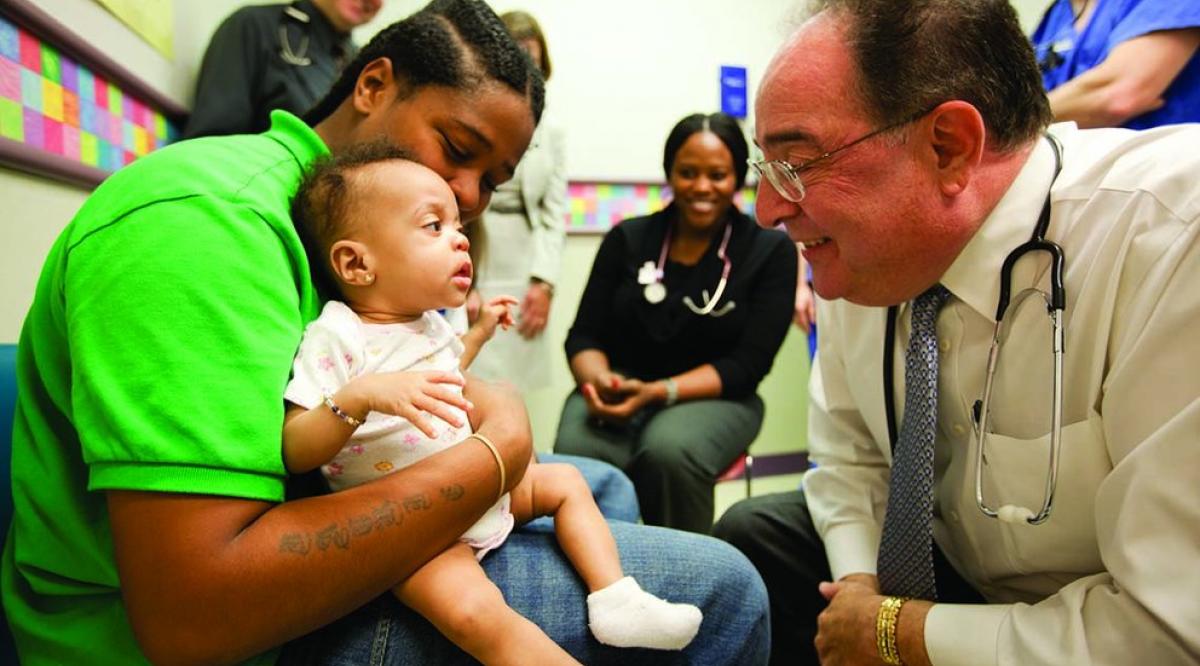Like any seemingly effortless endeavor—think Olympic-level gymnastics—best practices in executive communications are the result of months, if not years, of planning, strategizing, and asking questions of a lot of people, especially at the beginning of a leader’s tenure. Then, leaders often develop their own style of communicating based on the culture and needs of their organizations and their personal strengths.
For Jay Perman, MD, president of University of Maryland, Baltimore (UMB) and a pediatric gastroenterologist, the essence of communications is personal contact. Along with regular lunches, quarterly Q&As, and scheduled office hours with students and faculty, he initiates community forums and town halls on topics important to the university such as diversity. And every Tuesday, he is joined by students from each of the university’s professional schools, including nursing, medicine, and social work, at a half-day resident’s Clinic. Along with fostering interdisciplinary cooperation, being at the clinic gives him regular, direct contact with students and young patients, all of whom reap the benefits of a holistic problem-solving approach.
“Things may be said that I might not agree with, but I need to hear them so we can come to a solution,” Perman said.
Cardiologist Christopher Cooper, MD, dean of the College of Medicine and Life Sciences at the University of Toledo (UT), uses another strategy that works well—walking the walk, or more precisely, jogging. The UT dean invites students, as well as faculty and staff, to a monthly run that encourages both spontaneous conversation and physical fitness. In addition to the group jogs, he makes time to meet with leadership, faculty, and constituent groups to learn about what’s going on.
Developing a message and a plan
“Having a strong executive communications function is essential, particularly when someone new is coming on board,” observed Elisa Siegel, AAMC chief communications and marketing officer. “In addition to helping new leaders communicate their values and vision, a good strategic communications plan helps define their messages and helps create and guide conversations in ways that fit the new leader and the institution’s culture. Executive communications also can help position someone as a thought leader in their local community and at the national level.”
Having a thoughtful, comprehensive communications plan allows an institution’s leadership to focus on fundamentally significant issues and to avoid “the tyranny of the immediate.”
Christopher Cooper, MD
College of Medicine and Life Sciences, University of Toledo
LouAnn Woodward, MD, dean of the School of Medicine and vice chancellor for health affairs at the University of Mississippi Medical Center (UMMC), favors a multilayered social media and communications blueprint. Along with a business Twitter account, she introduced a weekly email column “VC Notes,” with a click-through that enables students, faculty, and staff to submit questions, anonymously if they choose. Woodward also takes impromptu walks through campus to connect with these groups in person.
Her columns, publications for internal UMMC audiences, and ad hoc communications about special projects are designed to cast the widest and most comprehensive net possible, Woodward explained. One newsletter presented complex details about pending Liaison Committee on Medical Education (LCME) accreditation through short, manageable chunks of information several months before the event. “Because faculty members knew exactly what was happening and why it was so important, we passed the LCME with flying colors,” she noted.
Even routine practices can yield major insights. UMMC’s monthly leadership rounds bring together a diverse group of senior clinical and administrative staff focused on quality improvement. “Not only does this give [leaders] a chance to engage with different people and places, but [those attending the rounds] can also express their concerns,” Woodward observed. “Regardless of their job, all employees know they are being listened to. And we can identify problems and concerns before they become a crisis.”
Then, if a crisis erupts
Having a thoughtful, comprehensive communications plan allows an institution’s leadership to focus on fundamental issues and to avoid what Cooper calls “the tyranny of the immediate.” Otherwise, he said “stuff is flying at you every day,” such as meetings, crises, and other small fires.
And when the Titanic is sinking, having a solid communications strategy in place is especially critical. In 2010, Paul Klotman, MD, left the Mount Sinai School of Medicine in New York to take the helm as president, CEO, and executive dean of Baylor College of Medicine in Houston. “[Baylor] was in financial turmoil,” losing up to $70 million annually, a result of “too much upper-level management and not enough fiscal accountability,” he said.
Klotman lacked the time to gently persuade constituents of the painful changes and “organizational flattening” necessary to reduce the administrative workforce by 250 and implement a strict across-the-board budget cuts. But he did have the advantage and support of Claire Bassett, vice president of communications and community outreach, who understood the Baylor culture after more than 20 years of experience in the university’s Office of Communications.
Bassett helped Klotman negotiate thorny issues with the College of Medicine Board of Trustees and ease the Yankee vs. Southern cultural disparity. “Managing the board is a real skill,” he said. “Every member has a strong opinion.” And while he initially found it challenging to read the reactions of the board and others, he learned with experience and Bassett’s guidance. “In New York, people scream at each other then go have a beer. Here, they smile and shake your hand, even if they are furious with you.”
Although most interactions don’t involve a crisis, keeping the big picture in mind helps keep things on course. Once the situation stabilized at Baylor, Klotman began to implement an inclusive, strategic five-year plan, involving many of the faculty and trustees, and expanded the scope of advisors to include governance groups such as chairs, center directors, and faculty senates, among others.
The result was favorable, said Bassett. “Connecting the faculty and students with the board initiated transparency and dialogue and helped them understand the budgetary process.”
